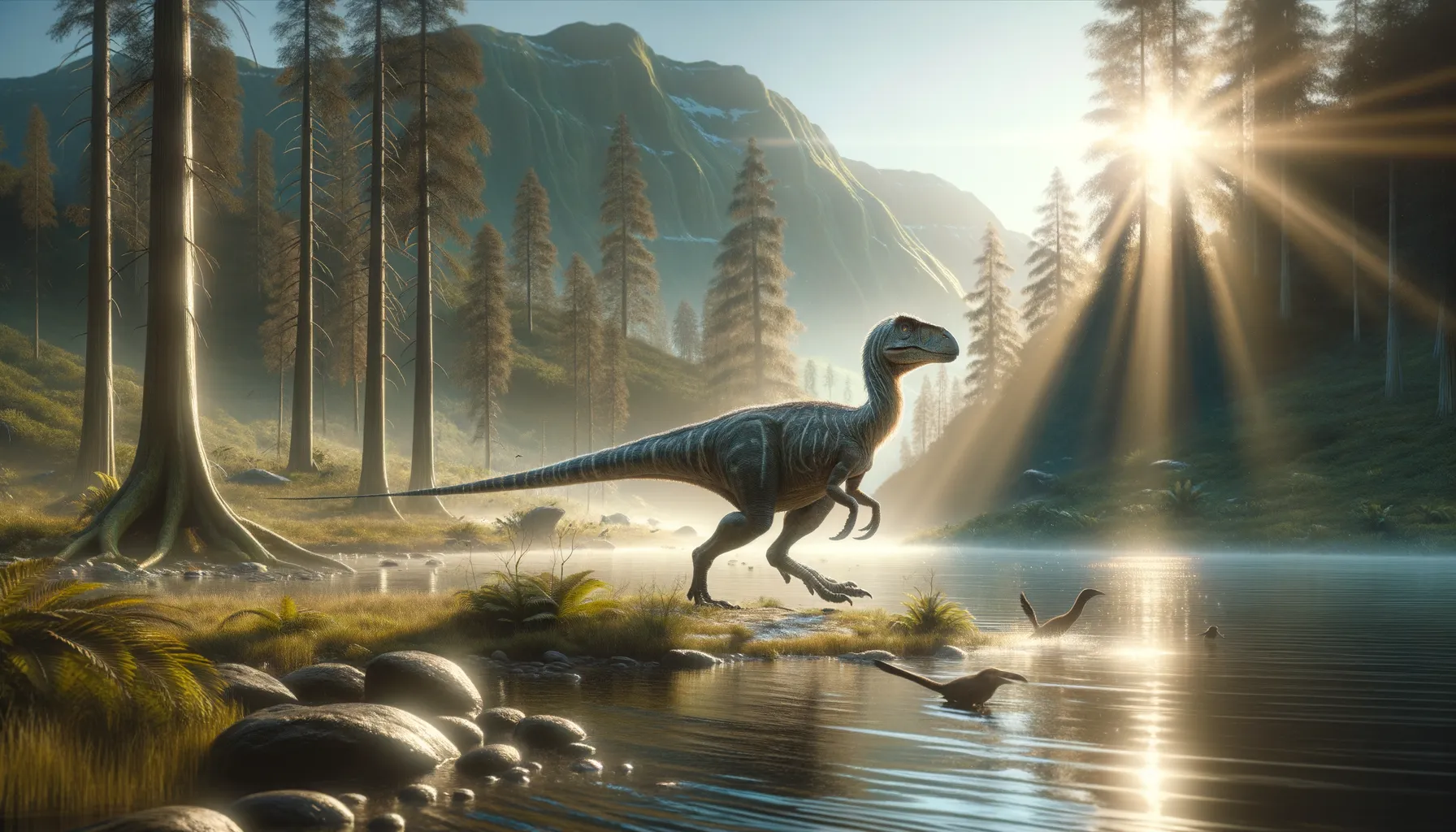
Limnornis
Unseen link in the bird evolution saga.
Period
Cretaceous
Length
Unknown, likely small-sized.
Height
Unknown, likely small-sized.
Weight
Unknown, likely small-sized.
Limnornis is often confused with early birds due to its scarce fossil record, which makes it challenging to provide detailed information. It belongs to a period rich with various theropods transitioning into avian forms. Discoveries attributed to Limnornis are often shrouded in uncertainty, making it a fascinating yet elusive subject for paleontologists. Interest in Limnornis primarily stems from its potential role in understanding avian evolution.
Diet
Limnornis likely had a diet similar to small theropods, possibly consisting of insects, small vertebrates, and plants. Its exact dietary preferences remain speculative due to limited fossil remains.
Hunting
Due to its presumed small size, Limnornis might have been a nimble predator, capturing insects or small creatures. Its hunting behavior remains largely hypothetical due to the lack of comprehensive skeletal evidence.
Environmental challenges
Limnornis lived during a dynamic period with fluctuating climates and diverse ecosystems. Competition for resources with other theropods likely posed a challenge. The shifting environments of the Cretaceous could have influenced its development and eventual extinction.
Speed
Not well-documented due to limited data.
Lifespan
Unknown due to insufficient fossil evidence.
First discovery
Discovered based on limited remains.
Fun Facts
- Limnornis is actually a name that was first assigned to a small bird species, not a dinosaur.
- This creature was a small ground-dwelling bird found in South America.
- The name 'Limnornis' derives from Ancient Greek, meaning 'marsh bird.'
- Limnornis was first described in the 19th century by scientists studying birds in Brazil.
- Often associated with marshy environments, this bird is known for its preference for wet habitats.
- Despite its name, 'Limnornis' isn't linked to any famous dinosaur-related discoveries.
Growth and Development
Details about Limnornis' growth are unknown due to the fragmentary nature of its fossils. As a small-sized theropod, it may have developed rapidly, similar to other small dinosaurs. It likely exhibited traits indicative of evolutionary transitions toward avian forms.
Habitat
The habitat of Limnornis is largely speculative, but it likely existed in regions with abundant vegetation and water sources. Its environment would have supported a wide range of species, providing ample opportunities for food and shelter. Climate variations during its era could have influenced its habitat choices.
Interaction with other species
Limnornis would have shared its environment with a variety of theropods and herbivorous dinosaurs, leading to interactions shaped by competition for food. Predatory threats likely required strategic adaptations and behaviors. Its interactions remain largely speculative due to limited fossil evidence.
Natural lifespan
The natural lifespan of Limnornis remains unknown.
Reproduction
Limnornis likely reproduced in a manner consistent with other small theropods, potentially laying eggs. The specifics of its reproductive behavior remain uncertain due to insufficient fossil evidence.
Social behaviour
Little is known about the social behavior of Limnornis. It might have exhibited behaviors common among small theropods, possibly including some social interactions. The extent of its social structures is speculative due to limited fossil findings.
Fossil locations
Fossil remains linked to Limnornis are sparse, making it challenging to pinpoint exact locations. Most knowledge is derived from fragmentary evidence, leading to ongoing debates within the paleontological community.
